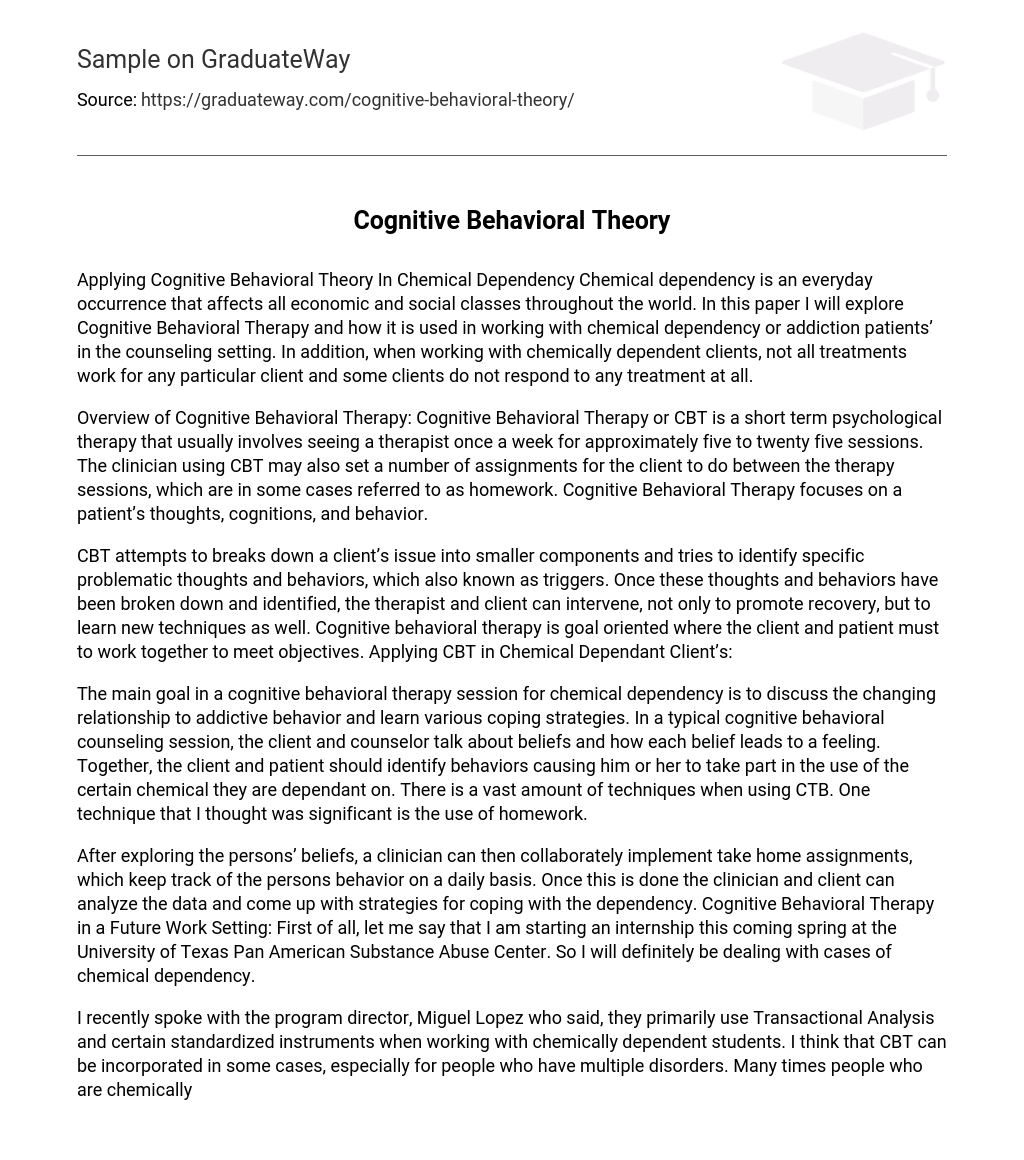Chemical dependency is an everyday occurrence that affects all economic and social classes throughout the world. In this paper I will explore Cognitive Behavioral Therapy and how it is used in working with chemical dependency or addiction patients’ in the counseling setting. In addition, when working with chemically dependent clients, not all treatments work for any particular client and some clients do not respond to any treatment at all.
Overview of Cognitive Behavioral Therapy: Cognitive Behavioral Therapy or CBT is a short term psychological therapy that usually involves seeing a therapist once a week for approximately five to twenty five sessions. The clinician using CBT may also set a number of assignments for the client to do between the therapy sessions, which are in some cases referred to as homework. Cognitive Behavioral Therapy focuses on a patient’s thoughts, cognitions, and behavior.
CBT attempts to breaks down a client’s issue into smaller components and tries to identify specific problematic thoughts and behaviors, which also known as triggers. Once these thoughts and behaviors have been broken down and identified, the therapist and client can intervene, not only to promote recovery, but to learn new techniques as well. Cognitive behavioral therapy is goal oriented where the client and patient must to work together to meet objectives.
Applying CBT in Chemical Dependant Client’s: The main goal in a cognitive behavioral therapy session for chemical dependency is to discuss the changing relationship to addictive behavior and learn various coping strategies. In a typical cognitive behavioral counseling session, the client and counselor talk about beliefs and how each belief leads to a feeling. Together, the client and patient should identify behaviors causing him or her to take part in the use of the certain chemical they are dependant on. There is a vast amount of techniques when using CTB. One technique that I thought was significant is the use of homework.
After exploring the persons’ beliefs, a clinician can then collaborately implement take home assignments, which keep track of the persons behavior on a daily basis. Once this is done the clinician and client can analyze the data and come up with strategies for coping with the dependency.
Cognitive Behavioral Therapy in a Future Work Setting: First of all, let me say that I am starting an internship this coming spring at the University of Texas Pan American Substance Abuse Center. So I will definitely be dealing with cases of chemical dependency. I recently spoke with the program director, Miguel Lopez who said, they primarily use Transactional Analysis and certain standardized instruments when working with chemically dependent students.
I think that CBT can be incorporated in some cases, especially for people who have multiple disorders. Many times people who are chemically dependent develop other mental disorders, for example, chemically induced depression. CBT has many techniques and is only one type of treatment available for chemical dependency. Conclusion:
In all, cognitive behavioral therapy is good when working chemical dependency; however, I believe that a combination of several different theories and techniques will facilitate better outcomes. I chose CBT because it is about the “here and now” and not like the dynamic approaches that look at the past and childhood. I do not have any firsthand experience working with chemical dependency but it is something that has always fascinated me and plan to find a career in. I have already started using some of these techniques on family and friends and the results are congruent with research I am currently doing.





